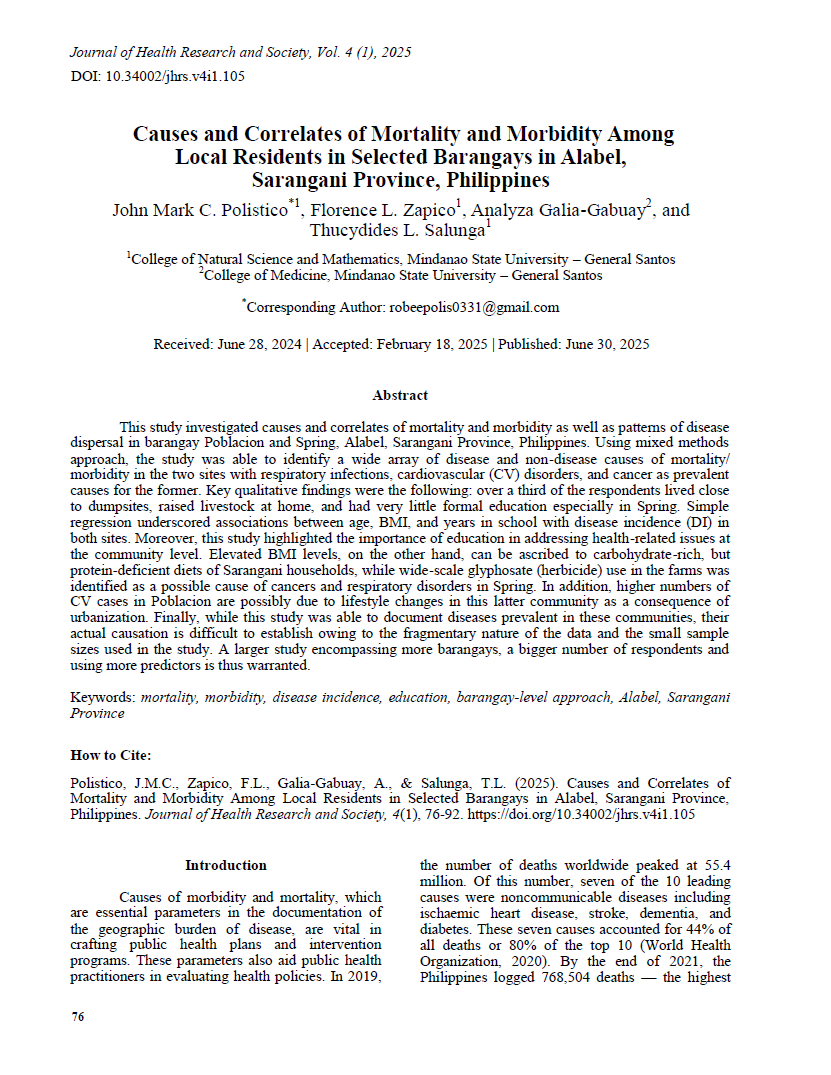Causes and Correlates of Mortality and Morbidity Among Local Residents in Selected Barangays in Alabel, Sarangani Province, Philippines
Abstract
This study investigated causes and correlates of mortality and morbidity as well as patterns of disease dispersal in barangay Poblacion and Spring, Alabel, Sarangani Province, Philippines. Using mixed methods approach, the study was able to identify a wide array of disease and non-disease causes of mortality/morbidity in the two sites with respiratory infections, cardiovascular (CV) disorders, and cancer as prevalent causes for the former. Key qualitative findings were the following: over a third of the respondents lived close to dumpsites, raised livestock at home, and had very little formal education especially in Spring. Simple regression underscored associations between age, BMI, and years in school with disease incidence (DI) in both sites. Moreover, this study highlighted the importance of education in addressing health-related issues at the community level. Elevated BMI levels, on the other hand, can be ascribed to carbohydrate-rich, but protein-deficient diets of Sarangani households, while wide-scale glyphosate (herbicide) use in the farms was identified as a possible cause of cancers and respiratory disorders in Spring. In addition, higher numbers of CV cases in Poblacion are possibly due to lifestyle changes in this latter community as a consequence of urbanization. Finally, while this study was able to document diseases prevalent in these communities, their actual causation is difficult to establish owing to the fragmentary nature of the data and the small sample sizes used in the study. A larger study encompassing more barangays, a bigger number of respondents and using more predictors is thus warranted.

